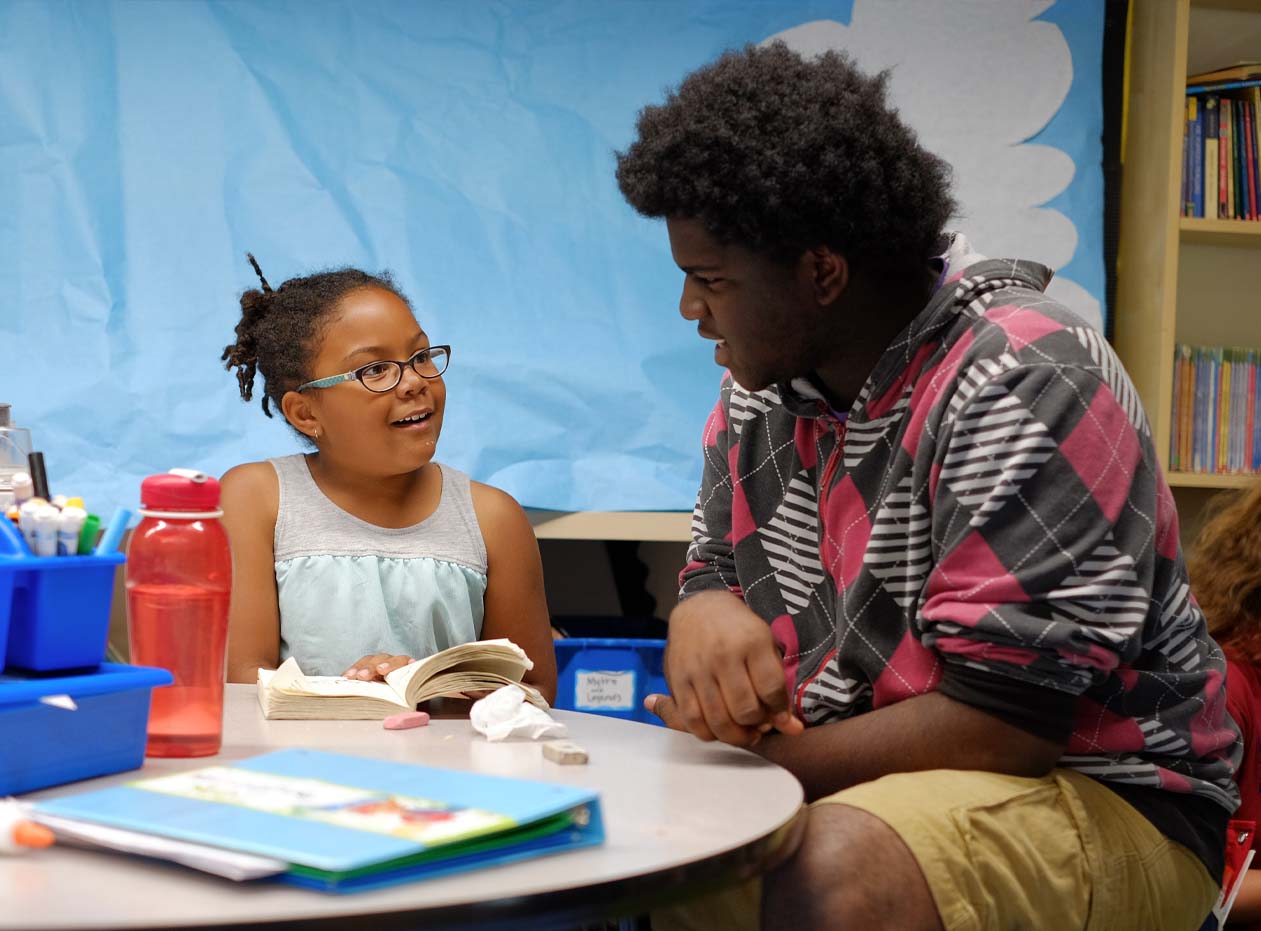PROJECT DESCRIPTION
INSTRUCTORS
SCHOOL SITE
LEVEL
SUBJECTS
ELECTRICITY USAGE
LESS THAN FIVE MATERIALS
TEACHERS NEEDED
BOOK CHAPTER

How do we learn to read? How do we learn to love reading?
In the Children’s Literature Project, each 11th grader was partnered with a specific elementary student as a “reading buddy.” Each 11th grader had three goals:
As part of planning the project, the collaborating high school and elementary teachers met numerous times to create one-to-one partnerships between their elementary and high school students. They took into account social-emotional needs and strengths, interests, experiences as a reader, learning challenges, and emerging bilingualism. In some cases, they met with parents as well.
Whether they were avid readers or struggling readers themselves, the 11th graders wrestled with questions such as “How does one learn to read?” “How do concepts like “decoding” actually work in the brain?” “How do readers make and correct common errors?” “What is a reading level and how does it work?” “How can one be aware and self-supporting when reading complex texts?”
At the same time that students were reading regularly with their buddies and reflecting on their literacy development process, the eleventh graders were also closely reading novels, and analyzing the writing techniques used so that they could put them to work in their own writing.
Want to see the whole project? Click the button to download the pages from the book that discuss this project!
Want to see the whole project? Click the button to download the pages from the book that discuss this project!
LANGUAGE ARTS:
To write and publish a high-quality, well-revised and edited original story at the appropriate reading and developmental level for your audience
To identify elements of quality in classic literature, and use them in original writing (i.e., characterization, plot and theme development, diction, detail)
To understand the literacy development process of young children
HISTORY:
To understand the historical contexts of the Great American Novel
To understand the historical context of specific examples, such as The Great Gatsby
SOCIAL AND EMOTIONAL LEARNING:
To be self-aware and work in service of others
To support each other’s development
To recognize personal strengths in ourselves and others
To recognize the feelings and perspectives of others
For most of the project, the class followed a regular schedule. On Mondays, Wednesdays, and Fridays, they built their own capacities as readers and writers. They read and analyzed great literature and wrote and critiqued their own stories.
On Tuesdays and Thursdays, they met with their reading buddies. Those days typically began with a brief eleventh grade class meeting that featured goal setting, preparation for literacy work, and gathering of resources. Then the students met with their buddies to do focused one-on-one literacy support.
After reading with their buddies, the class had a debrief. Sometimes Randy led the debrief, with a focus on “What did we learn and what does this mean for our work?” At other times, the elementary teacher led the debrief with a focus on early literacy skill development. Sometimes the class solicited feedback from the elementary reading buddies and used that to drive the debrief.

Every eleventh grader had at least three “literary influences”: one recommended by the teacher and at least one that they selected themselves. Each student identified at least one specific element of quality along with specific examples in their literary influences. Effectively using these elements in their own writing then became their learning goal. For example, a student might say, “I want to use diction in characterization similar to the way F. Scott Fitzgerald does in Chapter 2 of The Great Gatsby when we meet Tom.”
Students worked in a consistent “Editing Group”: four students with a lead editor in each group. The groups were co-designed by the students and teacher. The class developed a common editing practice, which the groups then used consistently to critique their stories. Concurrently, they critiqued and analyzed classic literature with the same method that they used to critique their own stories.
Students had learned about reading levels from the elementary teachers. As they were writing their stories, every student uploaded a sample chapter to a Lexile scoring system online to identify reading level, sentence length, word complexity, and other elements that they had learned about from the elementary teachers and from their own experience with their buddies. They then compared these Lexile elements to the reading levels of their reading buddies and edited and revised so that their work would be appropriately calibrated to each buddy’s reading level. The final books ranged from 30-page stories to 160-page novels.
The final visit to the elementary school was a celebration where the authors presented their original books to their buddies. A full class set was also given to the elementary classroom library for future students to enjoy.

